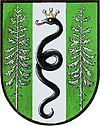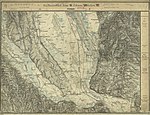Wound shoe
|
Wound shoe
|
||
|---|---|---|
| coat of arms | Austria map | |
|
|
||
| Basic data | ||
| Country: | Austria | |
| State : | Styria | |
| Political District : | Graz area | |
| License plate : | GU | |
| Surface: | 12.89 km² | |
| Coordinates : | 46 ° 56 ' N , 15 ° 27' E | |
| Height : | 322 m above sea level A. | |
| Residents : | 1,629 (January 1, 2020) | |
| Postal code : | 8142 | |
| Area code : | 03135 | |
| Community code : | 6 06 56 | |
| NUTS region | AT221 | |
| UN / LOCODE | AT WDU | |
| Address of the municipal administration: |
Am Kirchplatz 6 8142 Wundschuh |
|
| Website: | ||
| politics | ||
| Mayoress : | Barbara Walch ( ÖVP ) | |
|
Municipal Council : (2020) (15 members) |
||
| Location of Wundschuh in the Graz-Umgebung district | ||
 Wundschuh, center with Dorfwirt, church and municipal office |
||
| Source: Municipal data from Statistics Austria | ||
Wundschuh is an Austrian municipality in Styria , in the Graz-Umgebung district with 1629 inhabitants (as of January 1, 2020) on an area of 12.89 km².
geography
Geographical location
Wundschuh is located in the Grazer Feld in the Kaiserwald . The community is located approx. 12 km south of the provincial capital Graz . In the west of the municipality are the Wundschuher ponds , the most important flowing waters are the Poniglbach and the Laabach .
Community structure
The community consists of the cadastral communities (area 2015) Kasten 614.42 ha and Wundschuh 674.10 ha as well as the following localities (residents as of January 1, 2020):
- Forest (133)
- Gradenfeld (175)
- Box (429)
- Ponigl (119)
- Wound shoe (773)
Neighboring communities
| Premstätten | Premstätten | Kalsdorf near Graz |
| Dobl-Zwaring |

|
Werndorf |
| Dobl-Zwaring | Wildon | Wildon |
geology
Together with its neighboring municipality of Kalsdorf and the former municipality of Weitendorf, Wundschuh is located in the catchment area of former volcanoes that were active in the Miocene around 10 million years ago. They cannot be seen on the surface of the earth, but the volcanic rock andesite was found at a depth of 33 to 35 m when drilling . It is attributed to the Kalsdorf volcano.
history
The first church in Wundschuh was probably built around 1100. The earliest written document is from 1230 and is "Wrmscah". The name goes back to Old High German wurm (reptile) and skahho (individual forest) and means snake forest. The field name was transferred to the settlement. The municipality belonged to the rule of Neuschloß . The abolition of the manors took place in 1848. The local community as an autonomous body was established in 1850.
After the annexation of Austria in 1938, the community became part of the Reichsgau Steiermark . 1945 to 1955 it was part of the British zone of occupation in Austria.
Population development

Historical maps
- Wundschuh and the surrounding area in the regional recordings from 1790 to 1910
"Pundschuch": Josephinische Landesaufnahme , approx. 1790.
Franzisco-Josephinische Landaufnahme , ca.1910
Culture and sights
Museums
The Erlebnishof Reczek farm museum is the largest of its kind in Austria and shows old tools, machines and vehicles.
Buildings
Neuschloss Castle is a baroque building from the middle of the 18th century southeast of Wundschuh. In 1265 a court of the sovereign was already mentioned there, under Emperor Friedrich III. The facility was redesigned together with the fish ponds at Wundschuh and was owned by the Counts of Dietrichstein from 1643 to 1780 , these owners expanded the facility into a new castle . The originally two-story building was then extended by a third floor between 1804 and 1809. Neuschloss has belonged to the Counts of Enffans d'Avernas since 1805 .
The church is dedicated to St. Nicholas , the patron saint of the castaways. It was a branch church of the parish Hengsberg , in 1785 it was raised to a parish itself. The church was rebuilt in the Baroque style in 1912–1915 , only the foundations of the tower, where a stone is dated 1497, have survived from a late Gothic building. The baroque furnishings come from the old church. A Roman stone is walled in at the rectory from 1881, a Marian column dates from 1863.
regional customs
The "Wurmschachern" event has been held every two years since September 13, 2009.
Sports
Wundschuh has a football club, the USV Wundschuh, which currently plays in the Mitte regional league.
Economy and Infrastructure
traffic
The Pyhrn Autobahn A 9 touches the municipality in the east and can be reached via the full connection to Wundschuh (exit 197). The also north-south oriented Grazer Straße B 67 from Graz to Leibnitz is about three kilometers away, lies east of the autobahn and is connected by several diagonal streets.
The nearest train station is about three kilometers east-southeast in Werndorf an der Südbahn with hourly S-Bahn connections to Graz and Leibnitz.
On the eastern edge of Werndorf, the Mur flows south, which is accompanied by the Mur Cycle Path .
The Graz Airport is located about seven kilometers to the north.
economy
The place is characterized by agriculture.
In the hilly, wooded west lies the Wundschuhersee, a fishing lake with camping sites mainly used by caravans. The lake is only a small part of the Wundschuher Ponds, which extend to the north and were created in 1442 and belong to the Neuschloß estate.
Two other bathing lakes, Schwarzlsee and Copacabana, are each about six kilometers to the north.
In autumn 2015, a distribution center for the food discount store Lidl went into operation.
politics
mayor
Barbara Walch (ÖVP), the sister of Minister Christine Aschbacher , has been mayor since February 2019 . Before that, it was Karl Brodschneider (ÖVP) for 22 years.
In addition, Vice Mayor Karl Scherz (ÖVP) and community treasurer Ronald Friedrich (ÖVP) are members of the community board.
Municipal council
The municipal council consists of 15 members and will be composed as follows after the 2015 municipal council elections:
- 11 ÖVP ,
- 2 The Greens ,
- 1 FPÖ and
- 1 SPÖ
The last municipal council elections brought the following results:
| Political party | 2015 | 2010 | 2005 | 2000 | ||||||||
|---|---|---|---|---|---|---|---|---|---|---|---|---|
| be right | % | Mandates | St. | % | M. | St. | % | M. | St. | % | M. | |
| ÖVP | 677 | 67 | 11 | 719 | 72 | 12 | 606 | 63 | 10 | 574 | 66 | 11 |
| SPÖ | 96 | 9 | 1 | 227 | 23 | 3 | 290 | 30th | 4th | 186 | 22nd | 3 |
| FPÖ | 112 | 11 | 1 | 56 | 6th | 0 | 60 | 6th | 1 | 99 | 12 | 1 |
| The green | 127 | 13 | 2 | not running | not running | not running | ||||||
| voter turnout | 80% | 84% | 82% | 81% | ||||||||
coat of arms
The municipality of Wundschuh was granted the right to use a municipal coat of arms with effect from July 1, 1965.
Description of the coat of arms: In a green shield, a silver post covered with a black, gold-crowned, red-tongued snake, which is accompanied on both sides by a silver spruce tree growing out of the edge of the shield.
Web links
- 60656 - wound shoe. Community data, Statistics Austria .
- Wundschuh community
- Reczek Adventure Farm - Farm Museum
- Web presence of the USV Wundschuh
Individual evidence
- ↑ Statistics Austria: Population on January 1st, 2020 by locality (area status on January 1st, 2020) , ( CSV )
- ↑ H (aymo) Heritsch, H (elmut) Höller, K (urt) Kollmann: Styrian, tertiary and volcanic area . In: Excursion III / 7, Grazer Bergland, Eastern Styrian Tertiary and Volcanic Area . Announcements of the Geological Society in Vienna. 57. Volume 1964, Issue 1. Page 367.
- ↑ Peter Slapansky, Reinhard Belocky, Heinz Fröschl, Peter Hradecky, Peter Spindler: petrography, geochemistry and geotectonic classification of Miocene volcanism in the Styrian Basin (Austria). In: Treatises of the Federal Geological Institute. Volume 56 Issue 1. Vienna 1999. Geology without borders. Festschrift 150 years of the Federal Geological Institute. Page 421. ISBN 3-85316-004-2 . ISSN 0378-0864 .
- ↑ Fritz Frhr. Lochner von Hüttenbach: On the name property of the early Middle Ages in Styria (= magazine of the Historical Association for Styria . Volume 99 ). Böhlau Verlag, Vienna 2008, p. 60 ( historerverein-stmk.at [PDF; 16.9 MB ]).
- ↑ Dehio Handbook, page 328.
- ^ Kurt Woisetschläger, Peter Krenn: Dehio-Handbuch - Die Kunstdenkmäler Österreichs: Styria (excluding Graz). Topographical inventory of monuments, ed. from the Federal Monuments Office, Department for Monument Research. Publisher Anton Schroll. Vienna 1982. ISBN 3-7031-0532-1 . Page 626.
- ↑ http://www.wundschuh.at/system/web/default.aspx?menuonr=220018873 Website of the community of Wundschuh> Freizeit / Vereine> Neuschloß, accessed August 29, 2015.
- ↑ Kleine Zeitung: Wundschuh: Barbara Walch becomes the new mayor . Article dated February 11, 2019, accessed February 23, 2019.
- ^ Community of Wundschuh: local council (accessed on February 13, 2019)











